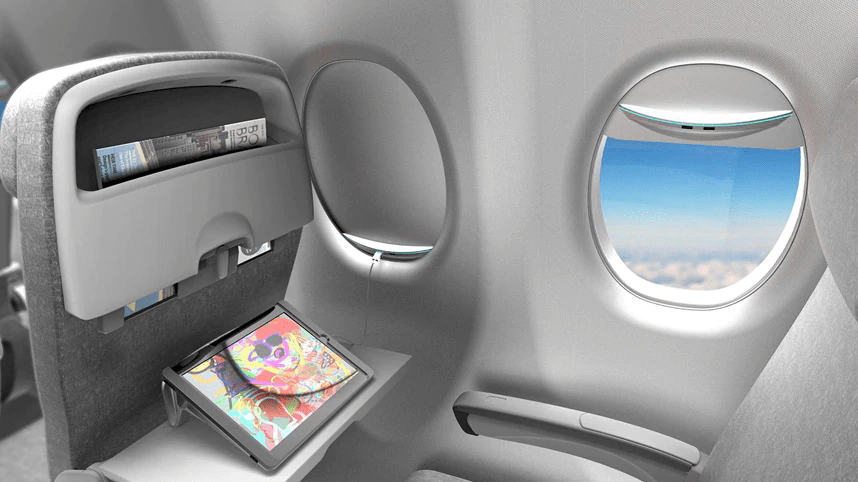You’ve just boarded your aircraft and maybe you’re feeling a little smug because you already know so much stuff, like why planes still have ashtrays (even though smoking on planes has been banned for decades), why their toilets are so loud and why they’re usually painted white (and why their seats are often blue).
You get all settled in your seat and look out the window. Not much to see….just the tarmac, with a little action here and there. So you start looking AT the window. All things considered, it sure is tiny, but you’ve already learned why that’s the case. You can also see the little hole in the bottom of the window, and you smile to yourself because you know why it’s there.
But then a thought suddenly comes to you…why are airplane windows round?
Early Window Designs: Square and Rectangular Windows
Plane windows weren’t always round (well, they’re actually oval, and they weren’t always oval, either). They were square or rectangular way back then, but everything worked fine, so no big deal.
Late 1920s era Ford Trimotor plane
But as commercial air travel became more popular in the 1950s, airlines started flying at higher altitudes (here’s why they started doing that and why they flew at higher altitudes during the worst of COVID). The planes were pressurized so passengers and crew could survive the lower oxygen levels at 30-35,000 feet, and the cabins were changed to a more cylindrical shape to support the pressure. But for whatever reason, the windows remained square or rectangular.
Unfortunately, corners are always a structural weakness, and due to the severe pressure changes causing eventual metal fatigue. Three planes with square windows crashed in the 1950s due to fuselage failure, which began at the windows during flight.
The Transition to Round Windows
You might recall from physics class that arches have great natural strength. That’s why arch bridges have been the most popular types of bridges built in the past 2000 or so years – because if they’re made well, they don’t have weak points and they last.
According to the Guinness Book of World Records, the bridge over the river Meles (commonly called Caravan Bridge) is the oldest datable bridge in the world still in use. This ancient arched stone slab bridge was built sometime around 850 BCE in Izmir, Turkey.
And with that in mind, designers figured out what they needed to do, and planes began to be made with round/oval windows, rather than square ones.
Want to comment on this post? Great! Read this first to help ensure it gets approved.
Want to sponsor a post, write something for Your Mileage May Vary, or put ads on our site? Click here for more info.
Like this post? Please share it! We have plenty more just like it and would love it if you decided to hang around and sign up to get emailed notifications of when we post.
Whether you’ve read our articles before or this is the first time you’re stopping by, we’re really glad you’re here and hope you come back to visit again!
This post first appeared on Your Mileage May Vary
Join our mailing list to receive the latest news and updates from our team.

